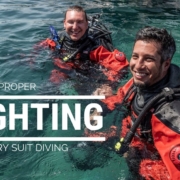The Difference in Rescue and Recovery Diving
/0 CommentairesDiver and Tender Working Together
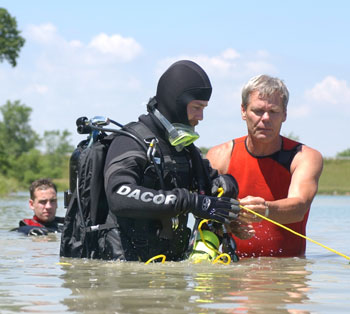
While the subject has been debated endlessly among teams, departments (PD vs FD) and online forums, the reality is that the majority of call-outs are recoveries. And by our very nature, we want it all to be rescue. From time to time, it will be. Teams will save lives, teams will make a difference. Teams will get a return on that investment of training, hard work, dedication and budget. Also important to remember is that even though it may have been a recovery, by doing so we’ve assisted family members, friends and loved ones with closure.
While there are many elements of a team that require practice and training, few affect the final outcome more than the diver and tender. A diver and tender working seamlessly together greatly impacts the primary diver’s ability to get into the water fast. And the tender’s ability to direct them where to search will look like one fluid motion. This all starts long before the call even comes in. The diver needs to have his or her gear set up and ready, including the dry suit turned out ready to step in, dry suit zipper waxed, BCD, and the tank and regulator set up (air off). The tender needs to have tending lines ready for fast deployment and communication system charged and ready. Once on the scene as the diver is getting suited up, the backup tender is getting as much detail for the dive as possible: depth, water movement, hazards and last known point. The tender also needs to be properly geared up: waders, PFD, gloves, etc. So, we have a primary and a backup diver getting geared up, we have a primary tender dressing his/her diver and setting up their own equipment that is needed, while the backup tender or incident commander is accessing the scene. All of this is happening in mere minutes.
Once the diver is in the water, the tender continues to collect more information regarding the victim’s whereabouts and refines the dive plan, keeping the diver up to date. It is at this stage that the tender needs to be organizing the other surface support team for de-con station and updating them with information from the diver.
For the well-established teams, this procedure may be second nature but for teams that are still in the building phase, this is critical information or a good reminder. The single most important item in all this is that the team brings back everything they put in the water.
For more information on how to build a more cohesive team between diver and tender, please visit us at https://www.tdisdi.com/erdi/get-certified/ERD-Tender/
Contact SDI TDI and ERDI
If you would like more information, please contact our World Headquarters or your Regional Office.
Tel: 888.778.9073 | 207.729.4201
Email: Worldhq@tdisdi.com
Web: https://www.tdisdi.com
Facebook: facebook.com/PublicSafetyDiving
Underwater Journal, Issue 27 is Here
/0 Commentaires
UWJ Issue 27 is ready for download. If you have not subscribed, simply sign in and create an account (takes just a few minutes and it’s FREE).
This issue of underwater journal dives into some great features including:
- Dive into History – Shattering the myth of the 200 ft breath hold diving barrier.
- Exploring Fiji’s Mystery Whale Cave – Through the process of carbon dating, we learned that the skeletal remains belonging to the largest of the four whales, whom we nicknamed Big Bird, was roughly 3,800 years old, placing the time of death during the age of the Egyptian Pharos.
- Shadows & Sunbeams – Paying a visit to Florida’s Manatee Springs
- Palau’s WOW Factor – Where is the best place in the world to scuba dive?
- Recognizing and Responding to Decompression Illness
There’s much more to enjoy and learn, get your FREE magazine today. Don’t forget, UWJ is iPad compatible to download and save in iBooks.
This is YOUR MAGAZINE with lots of benefits. We appreciate your support and encouragement! Enjoy, and please let us know what you think.
Underwater Journal is the official publication of SDI/TDI/ERDI.
Download Issue 27 here.
Contact SDI TDI and ERDI
If you would like more information about please contact:
TDI
Tel: 888.778.9073 | 207.729.4201
Email: Worldhq@tdisdi.com
Web: https://www.tdisdi.com
Facebook: www.facebook.com/TechnicalDivingInt
The “P-Valve,” Avoiding a Wet Drysuit
/0 CommentairesThe “P-Valve,” Avoiding a Wet Drysuit
By Steve Lewis
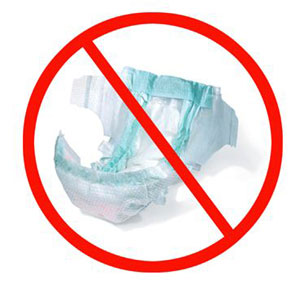
Well, the solution to that particular challenge is to dive with a “P-valve,” and for those of you unfamiliar with the concept of punching a hole in a perfectly good drysuit to retrofit this little convenience, let’s say right up front, I cannot think of a better way to spend a few pennies. (Forgive the pun). Let’s explore some of the reasons why. There is a tenuous connection linking hydration and DCS. While most of us have “grown-up” listening to advice from trusted sources such as DAN (Diver’s Alert Network), Duke University Medical Center, and various hyperbaric and technical diving gurus telling us that being well-hydrated helps to off-set some of the risk of decompression stress, the scientific papers to back this advice up with solid data are thin on the ground. However, many of what passes for leading authorities in the technical diving community fly in the face of science and swear that good hydration is key to a successful outcome on any and all dives.
“Dive Hydrated” is the common mantra and most of us follow that guideline without question. And regardless of the position of the medical and scientific establishment with regards DCS and hydration, there are volumes of papers and reports in sports medical journals pointing to the importance of good hydration and the peak performance of mind and muscles in athletes. You may or may not feel this is entirely relevant to you and your diving, but I believe it is to mine. There have been occasions when I have felt sluggish and a little dimmer than usual and the physical problem has been dehydration. Therefore, my daily average intake of about three litres of water is unchanged by the diving calendar; and ample water intake pre, post and sometimes during a dive has become the norm. But this behavior does bring up the potentially embarrassing issue of bathroom breaks while zipped into one’s “thermal protection.” Essentially: how and where?
Let’s discuss the “How” first. There are of course, adult-sized diapers for both men and women, and while these may be a viable solution for some, diapers are not the most green of products and are certainly not the most reliable, hygienic or comfortable. It’s unclear who first decided that a better solution to the question HOW was to plumb a piece of hose to a simple-to-open valve on the diver’s leg, which when closed kept water out, but when opened allowed liquids to be dumped “off-board.” The connection between the outside of the suit and the male diver was achieved with a little medical device known as a condom catheter (WARNING: reader discretion advised > “The P-Valve Struggle – condom catheter“). My first encounter with a so-called “P-Valve” occurred while cave-diving in North Florida. Fixing a newly purchased model to what had been a perfectly dry drysuit, required some will-power, the empty brass cartridge from a .45 caliber pistol, a hammer, and a strategically placed piece of wood on the left thigh of the suit. Once the hole was made – clean and the perfect size – liberal amounts of sealant and exact positioning of bolts, nuts and washers, resulted in a watertight seal. As an aside, I have since owned more than 10 drysuits, all of which have been fitted – either by the suit manufacturer or as a post-sale upgrade – with a P-valve of some sort or another, and quite remarkably, all have functioned well. All that remained during my very first experiences with a P-Valve was the connection between it and me.
Enter the external male catheter. The ubiquitous Google search will turn up countless amusing and sometimes alarming stories focused on the… issues… divers around the world have suffered through coming to terms with the fitting, successful use of, removal and disposal of condom catheters. I am going to resist the urge to add my experiences over and above the following advice. While condom catheters are essentially a small latex or silicone tube with one end designed to connect it and its wearer to some sort of plumbing… including a drysuit’s P-valve there are subtle differences between Brand X and Brand Y. External male catheters are available in several different models, different materials, and yes, different sizes. They can be purchased in bulk online from several different medical supply houses and many dive centers carry a small stock for folks who only need to buy in smaller quantities.
Your mileage may vary, but the most popular and best-selling according to a spokesperson at one of the largest online suppliers, Lighthouse for the Blind, based in St. Louis, Missouri, is self-adhering and non-latex. This model has a wide-band of “glue” on the inside to help keep it in place, which is certainly an asset when diving, but that takes a brave soul to remove from its place of work from time to time. One more thing: “What you divers have to consider,” said the nice spokeswoman at Lighthouse. “Is that these items were designed to hold fast to someone either in a wheelchair or invalided in bed, and not swimming around in the ocean.” She insisted that getting the correct size is important to “staying connected” and I agree with her! We can leave this topic with a tip of the hat to the women responsible for the design and manufacture of the “She-P:” the corresponding piece of kit to an external male catheter for female divers.
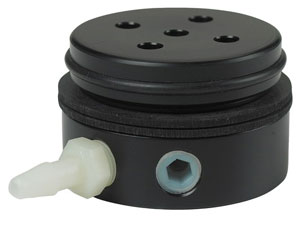
I think we can wrap this up with one final item: cleanliness. There are several suggestions for maintaining a clean and hygienic off-board dump. I know several rebreather divers who flush their P-valves with the same solution that they use to disinfect their counter lungs. Some other divers flush their P-valve system with a mix of white vinegar and rubbing alcohol and then rinse with water. Some use a dilute bleach solution. I use a 10 percent solution of Dettol™, a liquid antiseptic and disinfectant available over-the-counter in most drug stores. It smells of pine oil and the active ingredient is chloroxylenol – a pretty powerful germ killer. I first encountered the use of dilute Dettol as a topical disinfectant for open wounds and figured that if it’s OK for the Royal Hampstead Teaching Hospital, it’s probably OK to rinse out my P-Valve and the inside of my drysuit with it. Once again, your mileage may vary, but Dettol followed by a thorough rinse with fresh water has kept me safe from any infections for many, many dives.
Well, there really isn’t much to add except to restate that even though the jury MAY still be considering the verdict on the relationship between thorough hydration and DCS, many of us choose to drink lots of water when we dive, and feel better for being able to get rid of some of it during our dive! Oh, that brings us to the unanswered question of WHERE. Well, not to put too fine a point on things: wherever. Dive safe.
Contact SDI TDI and ERDI
If you would like more information, please contact our World Headquarters or your Regional Office.
Tel: 888.778.9073 | 207.729.4201
Email: Worldhq@tdisdi.com
Web: https://www.tdisdi.com
Facebook: www.facebook.com/TechnicalDivingInt
Stories from the Dive Sites
/0 Commentairesby Scott Cadreau
A Technical Wreck Dive to Vitric, in Key Largo FL

After hearing about the wreck, I spent some time on the internet digging around for some information on the dive. Even though it went down in 1944 and is relatively close to Key Largo, no one had identified it until 2000 when Mike Rodriguez identified the wreck after hearing about it from local fisherman. The ship was 165’ long and 36’ wide and was used as a cargo ship when it sank. It’s cargo that day was primarily 130,000 gallons of syrup. The reports that our group had heard was that there wasn’t much left of the wreck except the large tanks for holding the syrup.
Living in Phoenix, it is not an easy trip to get out to Florida to dive. After my dive course (Adv Nitrox/Deco Procedures) class, I made several trips to continue my training. Every trip, the Vitric dive was on our radar, but the stars just wouldn’t align. With all of the great dive sites in Key Largo, it wasn’t a huge deal to not make a trip to the Vitric, although some days it seemed to be taunting me.
As it turns out, six trips later, we had our opportunity. The weather forecast was good. The seas were calm. The gulfstream was far enough away from the wreck to allow us the opportunity. I was in town for some instructor training and had booked an extra day for the chance to make the dive. The forecast told us to hold until Tuesday, so I changed my flight and extended my hotel and car. Tuesday morning came and the forecasters seemed to be spot on. Dan had a busy morning filling tanks for the dive. There were four divers and we used twenty total tanks. Our bottom mix was 13/60. We were travelling with 21/35 which we would also use for our initial decompression. We each carried 50% and 100% for deco. Dan and I each carried a tank with 19/50 in it as an emergency gas, should major problems occur. We used about 600 cubic feet of helium to make this dive possible.
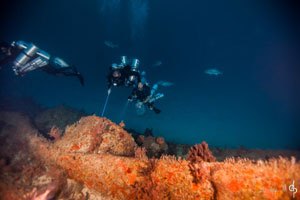
On board, we had Captain Mike and very able mate Jame. The divers were Dan, Luke (with camera in tow), Tim and me. We discussed with the crew our plan and emergency procedures. We didn’t want to haveput any of the emergency procedures into action, but we had to make sure everyone knows what to do if something does come up. As we passed Molasses reef (which is reportedly named because of the spill of Molasses from the Vitric), we mused that some of the captains moored there were probably confused as to where we were going. As we passed the reef and the water started to gain depth, everyone got into serious mode. We spotted the wreck on the sonar and did a surface current test. Even though we know that we could have multiple current changes on the way down, we had to go with the best information we could get. The wind was about 5 knots and the seas were 1 to 2 feet. We dropped the block and it just sat there. Not a note of current!
We all started to gear up. This is really going to happen. Jame and Mike were helping us get all of our tanks clipped off and we all ran through our gas tests. There is nothing like testing Helium mixes to get the party going. I opted to go off the side of the boat with a back roll while the other three were leaving from the swim platform in the back. Mike spotted us 100 feet from the wreck in the direction the normal current runs. This would give us a better chance if there was current below us. “Dive Dive Dive” We all entered the water without a problem. After adjusting everything from the roll and settling in for the descent, I looked around into crystal clear blue water and was at peace. Diving is such a wonderful thing! I gave a couple of kicks to get in line with my team and we all gave the okay. By about 100 feet, we were making good speed downward. At one point, my computer said 118 feet per minute. We arrived at 160 feet in about two minutes. This was our planned switch depth to our bottom gas. We all switched without any incident.
I am not sure (I will have to examine my computer data) where the cooler water actually started, but it seemed to hit like a brick wall at about 240 feet. I do know my computer said 59.9° and learned later that Luke’s read as low as 58.3°. This is quite a contrast to a surface water temperature of 86°! About that same depth, the visibility seemed to drop to about 50 feet. Maybe the cold water affected my vision. Shortly after the initial shock of cold, I saw something in the sand. It looked like an old pipe. It was definitely not natural. We were close! Dan saw the same thing at about the same time. Another couple feet of descent and a dark figure appeared before us. We were only 30 to 50 feet from the wreck. I shot some gas into my bladder and leveled off at about 285 feet and swam over to the wreck. We did it! All four of us were smiling ear to ear. Suddenly the cool water wasn’t even noticeable. There was a large Barracuda and a very large school of Amberjack on the wreck. They seemed curious as to our presence. They were not shy at all. I guess they don’t get a lot of human visitors. I am sure some of Luke’s photos will show how close they got.

We ascended to 210 feet and Dan shot a bag. It was time for the not-so-fun part of the dive. The only eventful thing during decompression was Luke got a small amount of water in his camera housing and it set the alarm off. As it turns out, there is no way to silence this alarm underwater. It beeped nonstop for the 50 minute deco.
Once back onboard, everyone was super excited. We all talked about the dive and filled Mike and Jame in on what we saw. Laughing about the chilly water and how fast the dive went. Congratulations all around. We headed home with smiles and feelings of accomplishment. At the shop, we retold our story to anyone who wanted to listen. The staff and locals were very happy for us and it wasn’t hard to tell we were ecstatic.
It is estimated to be between 50 and 100 divers that have ever been to the Vitric and we are lucky enough to be counted in that number. Discussions of another dive with more gas have already begun.
The wreck:
Our understanding from the limited information we were able to gather was that the wreck was not in very good shape and we would be looking at some molasses pots and rubble. The structure was surprisingly big, since it is primarily made up of the large pots. The mast is in the sand on one side and the steering section is supposed to be lying just off the main structure. We did not see the steering section on this dive, but it has been reported by other divers. There are a few anchors and chains (assumed from local fishing boats) in the sand near the wreck too. We swam the length of the wreck to give it a quick once-over. We did not bring enough gas to make this a long expedition dive. The pots are large. Even knowing that they held 130,000 gallons, the pots still seemed huge. It would be great to be able to find one of the motorcycles that the ship was supposedly transporting. Finding anything that would 100% identify the ship as the Vitric would be wonderful to come across also. This wreck certainly warrants more dive time to fully understand all that is left.
Contact SDI TDI and ERDI
If you would like more information, please contact our World Headquarters or your Regional Office.
Tel: 888.778.9073 | 207.729.4201
Email: Worldhq@tdisdi.com
Web: https://www.tdisdi.com
Facebook: www.facebook.com/SDITDI
Drysuit vs Wetsuit: Which One is Best for You?
/1 CommentaireNothing is worse than going on a scuba vacation and being cold during your dive. Actually, there is – getting on the 2nd or 3rd dive and being cold before the dive even begins. And this is how the debate begins; Dry Suit vs Wet Suit.
Diving Without a BCD
/0 Commentairesby Sean Harrison, VP of Training

Let’s look at what not to do or use for a BCD. Often divers will get very comfortable with a BCD, and rightfully so. A good BCD should fit perfect, feel comfortable and the diver should know where every pocket and clip is, but one BCD may not be right for all types of dives.
Divers buying their first set of gear will choose equipment that is suited for the dives they have always wanted to do or for the trip they have planned, and often times this means warm tropical dives. For these types of dives, focusing on the BCD of course, the best BCD is one that provides appropriate lift for minimal thermal protect and features a single cylinder attachment. The BCD may also be very streamlined and have D-Rings made of plastic that are located in areas where lights and slates or even a camera may be attached. While this type of BCD is well suited for these dives, it will not work for colder dives, which require a lot more weight for the diver to submerge, or for technical dives, where the diver will be carrying additional cylinders. Technical BCD’s typically have metal D-Rings that are adjustable and are located differently so that stage bottles can be clipped in the correct location. Technical BCD’s also will have interchangeable air cells so the lift capacity can be increased or decreased based on what the diver is carrying. Finally, these BCDs also have the capability of attaching to a rebreather, if the rebreather is designed to be used with the diver’s BCD.
The final item on the ‘what not to do’ list is use other forms of trapped air as a buoyancy device. Divers have been known to use their drysuits as a primary buoyancy device. This is not only an unsafe practice, it also goes against most manufacturers’ recommendations (check owner’s manual for specific recommendations on how to use drysuit). In theory, this sounds like it would work, the diver is controlling one air space, the drysuit, rather than two, the drysuit and BCD, but it just does not work out that way. The unsafe aspect of using a drysuit as a ‘BCD’ is that the suit has seals to keep the air in, should a diver change his attitude to be vertical to make an ascent, the neck seal would vent excess air, decreasing the lift capacity and causing the diver to descend or swim harder to continue to ascend. This cycle would keep repeating itself, as the air expands during ascent.
Now for the slightly more sensitive subject of no BCD, this is really only practiced in commercial diving application where divers are tethered (connected by a line to a tender on the surface) to the surface and the surface support staff control their descent and ascent, sometimes by pulling on the diver or by raising and lowering a platform. These divers have no need to achieve neutral buoyancy and the additional air cell would only get in the way and may be punctured by sharp objects. Sport and technical divers should never consider diving without a BCD that has an air cell.
A BCD is just like any other ‘tool for the job’ in that you should pick the right BCD for the dive you are planning. There are simple solutions and BCDs that will work for multiple types of dives by simply changing out the air cell (adjusting lift capacity). This option allows the diver to get comfortable with one harness system and build the muscle memory of where his inflator, cutting device, lights and safety equipment are attached. The best thing to remember is to use the right BCD and don’t just use what you have, or you may find yourself in a sticky situation.
Contact SDI TDI and ERDI
If you would like more information, please contact our World Headquarters or your Regional Office.
Tel: 888.778.9073 | 207.729.4201
Email: Worldhq@tdisdi.com
Web: https://www.tdisdi.com
Facebook: www.facebook.com/SDITDI
Hydrated vs. Dehydrated… Glub, Glub, Glub
/0 Commentaires
Let’s set aside for the moment the fact that we are divers, and being hydrated is important. First, let’s look at some very basic facts that will help to understand the how and why we need to stay hydrated and what comprises Dehydration. Simply put, dehydration is a condition in which we lose body fluid, mostly water, and that loss exceeds the amount of water we take in.
How do we lose water? Merely by living, we lose water through exhalation, urinating and sweating. Then add to this exercise or activity (diving), and we lose even more. Should we be ill with fever or diarrhea (as in “don’t drink the water”), the deficit grows substantially. How can we recognize dehydration? Some of the signs and symptoms of mild dehydration include, obviously, being thirsty (more on this in a bit), perhaps feeling tired and darker yellow tinted urine would be an indicator as well. It’s estimated that these signs and symptoms occur with only around a 1-1 ½ % loss. That isn’t much. While it really is outside the scope of our discussion here, losses that approach 4-5% become very serious and require immediate attention.
One of the negative aspects of being dehydrated, especially as divers, is that it can be a contributing factor to decompression sickness. When we consider that traveling divers spend time on airplanes, which is an extremely dry environment and the possibility of increased alcohol intake, which leads to dehydration, it doesn’t take too much thought to realize that one must increase the fluid intake to compensate for fluid loss. Keep in mind that improper fluids, such as alcoholic beverages, do not hydrate the body very well. It has been often said in the past that coffee and tea….or caffeinated beverages were considered diuretics and contributed to fluid loss. The debate is still ongoing in regards to this.
Signs and symptoms of mild dehydration include:
- Dry mouth
- Sleepy or tired during daytime
- Decreased urination
And of course, being thirsty. If you find yourself at this point, being extremely thirsty, you’ve waited too long for that drink of water.
How do we become dehydrated? In addition to not drinking enough water, other contributing factors include increased activity, climate change, such as traveling to warm water diving locations, increased alcohol intake and illness such as vomiting or diarrhea, perhaps from food or water while traveling.
So, how do we hydrate? Well, yeah… drink some water. How much? As mentioned previously, if you’re extremely thirsty, you’ve waited too long to rehydrate. The best water intake is gradual over time, sustaining a nice balance with an increase of water intake with increased activity (diving). We’ve often heard of the “8 by 8” rule which suggests the average adult drink 8 eight ounce glasses of water per day, for a total of 64 ounces of water intake. Recently however, the Mayo Clinic is advocating an intake of 3 liters/101 ounces for men and 2.2 liters/74 ounces for women. Environment, as well as activity, will also impact how much water you should be drinking.
Another source of fluids can be so-called sports drinks, keeping in mind that we should take notice of the nutritional information label to avoid excessive sugar and sodium. In addition to liquids, we also derive hydration from the foods we eat. Fruits and vegetables can contribute up to 35% of daily fluid intake.
Staying hydrated as we enjoy diving is easy, makes sense and will contribute to having a great experience. In fact, why not throw your drinking bottle in your gear bag and make it part of your equipment check list as you prepare for the next dive or dive trip?
Contact SDI TDI and ERDI
If you would like more information, please contact our World Headquarters or your Regional Office.
Tel: 888.778.9073 | 207.729.4201
Email: Worldhq@tdisdi.com
Web: https://www.tdisdi.com
Facebook: www.facebook.com/SDITDI

